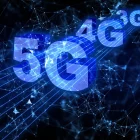The digital era has transformed the way we live, work, and play. The web, in particular, has seen numerous changes since its inception. The very nature of technology dictates that it is always evolving, and web development is no exception. With ever-changing user expectations, what might the future hold for the web of tomorrow? Let’s explore.
1. Progressive Web Apps (PWAs):
PWAs combine the best of both web and mobile apps. They offer a full-screen experience, offline accessibility, and can even send push notifications. Given the seamless user experience they provide, PWAs are set to become even more popular in the future.
2. WebAssembly:
Speed and performance have always been top priorities in web development. WebAssembly, a new binary format, is poised to offer near-native performance for web applications, enabling the development of high-speed web apps with languages other than JavaScript.
3. Single Page Applications (SPAs):
Driven by JavaScript frameworks like Vue, React, and Angular, SPAs are web applications that load a single HTML page. Their popularity stems from the reduced server interaction, resulting in a smoother user experience.
4. Motion UI:
Engaging the user is critical. With Motion UI, developers can create animations and transitions that guide and intrigue, leading to a more immersive web experience.
5. Augmented and Virtual Reality (AR & VR):
The blending of AR and VR into web experiences is already happening. The future will likely see more websites offering AR and VR components, changing the way we shop, learn, and engage online.
6. Voice Search Optimization:
As the adoption of smart speakers and virtual assistants grows, optimizing websites for voice search will become essential.
7. AI and Chatbots:
AI-powered chatbots can offer personalized user experiences, resolving queries in real-time. As AI becomes more sophisticated, expect these digital assistants to become the norm rather than the exception.
8. Serverless Architecture:
Serverless computing allows developers to build and run applications without the complexities of server management, reducing complexity in deployment and scalability.
9. Dark Mode Design:
Aesthetics matter, and with the popularity of dark mode in various OS and apps, more websites will offer dark mode variations for user comfort and battery-saving benefits.
10. API-first Design:
Instead of designing the application and then considering the API, the future will see more developers focusing on the API first, ensuring seamless integration across platforms.
The web of tomorrow promises more interactivity, faster speeds, and immersive experiences that bridge the gap between reality and the digital realm. As developers, it’s an exciting era to be part of, driving innovations that could shape our digital future.
#WebDevelopment #FutureOfWeb #WebTrends #ProgressiveWebApps #WebAssembly #SPAs #MotionUI #AugmentedReality #VirtualReality #VoiceSearch #AIPowered #Chatbots #ServerlessArchitecture #DarkMode #APIFirstDesign
Remember, while trends can predict the direction in which we’re headed, it’s innovation and creativity that truly define the future. Stay curious and keep exploring!


